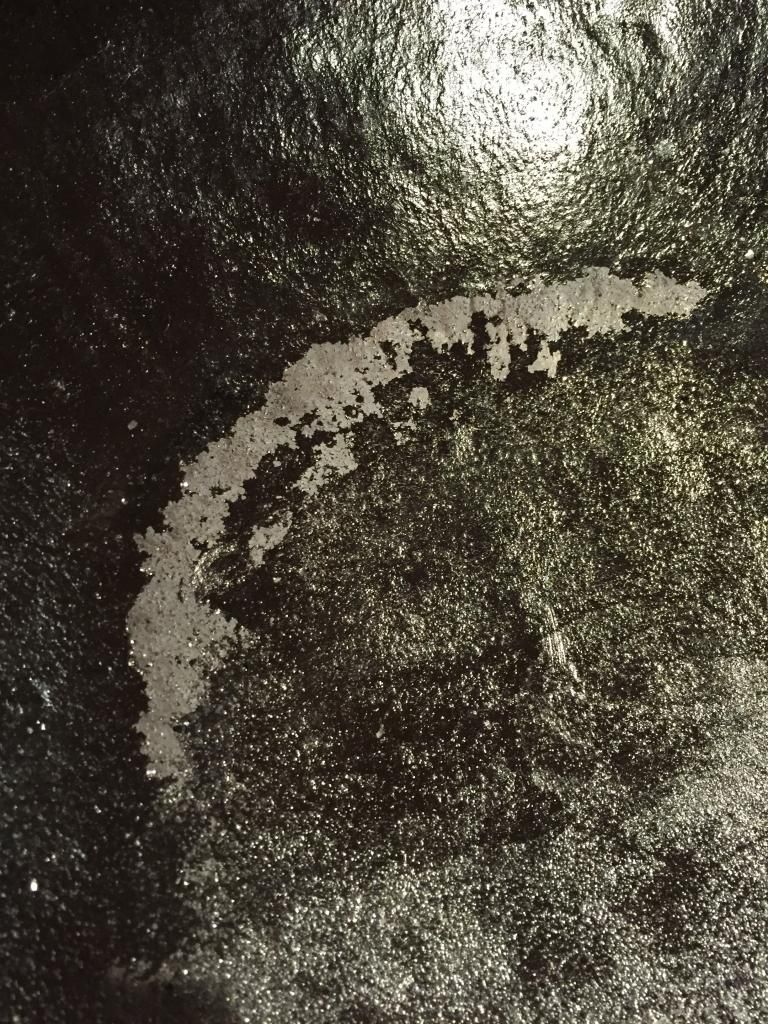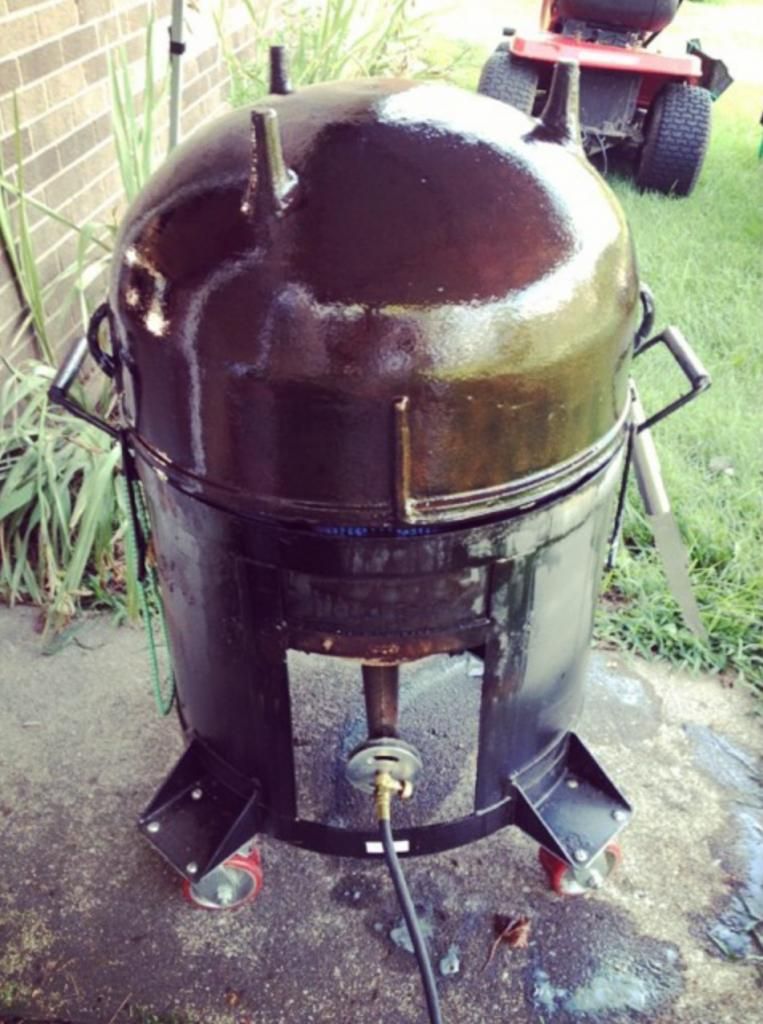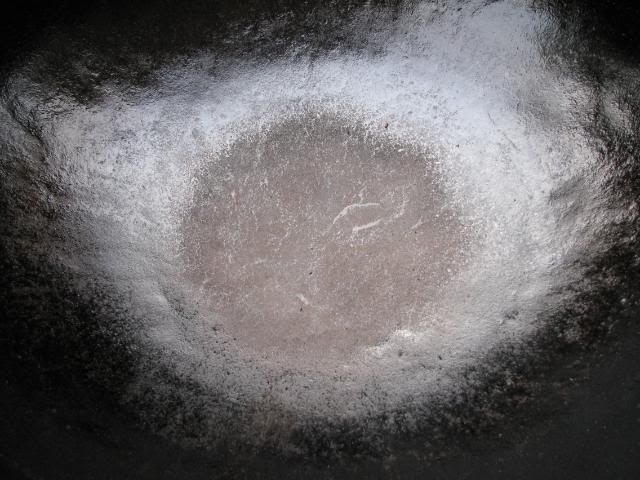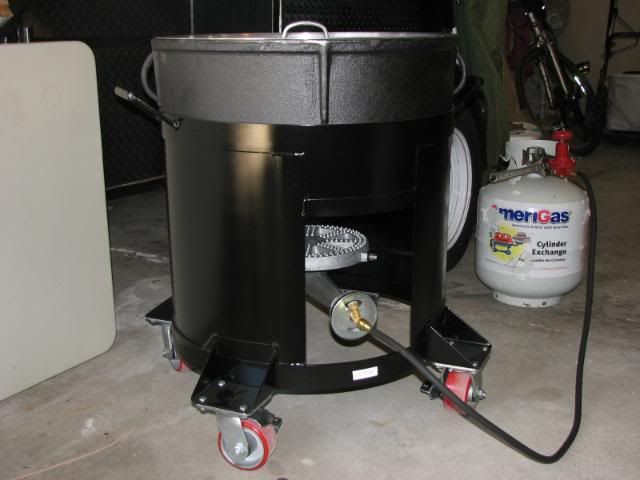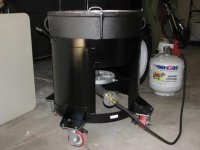
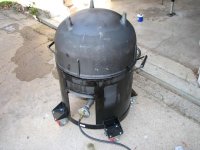
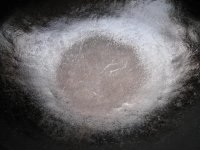
I'll try to go through this again as I've posted here with this problem a few years ago, have tried everything and searched everywhere and still haven't found the answer. I have 3 jambalaya pots with burners. 20 gal (pic 1), 10 gal and 5 gal. When I first got them they were extremely rough on the inside from the casting process. Like even rougher than a new Lodge. So I got a flapper disc for my grinder and sanded them smooth on the inside. Since they are too big to bake in an oven, I have resorted to flipping them upside down on the burner to burn (pic 2). I have used a variety of oils in trying to season...flax oil, vegetable oil, lard, bacon grease, solid vegetable shortening and so on. The process i use is this...preheat the pot to open the pores and then rub with a thin coat of oil. As Ive read, the thinner the better. Then I flip it upside down on the burner to bake. I shoot a laser thermometer on the bottom side of the pot (which is now on top) and shoot for around 450°-500°. I usually bake at this temp for an hour or a little longer and then cool. When I first turn it over it looks really good. Like it should. The problem is, when I gook in them, a couple things happen...the seasoning starts to scratch off the sides where I'm cooking. When cooking a jambalaya, you have to scrape the fond off the walls so the rice won't stick to it and turn black. A second thing that happens, is when Im done, I notice that on the inside of the pot just above where the flame is, has a big area where it looks like the seasoning has been burned off (pic 3). So this is my conundrum. Ive had these things for a few years now and cook in them only a handful of times a year. Ive tried not cooking acidic foods in them and that didn't work either. So I can not figure this out and have scoured the internet for every source available but nothing has worked yet. Any ideas? Could the bottom of the pot be too close to the heats source? That still wouldn't explain the scraping off a bit higher up the sides. Anyway, I'm open for suggestions. Hope someone can help!
Thanks. (I edited this after posting and attached better pics below)
